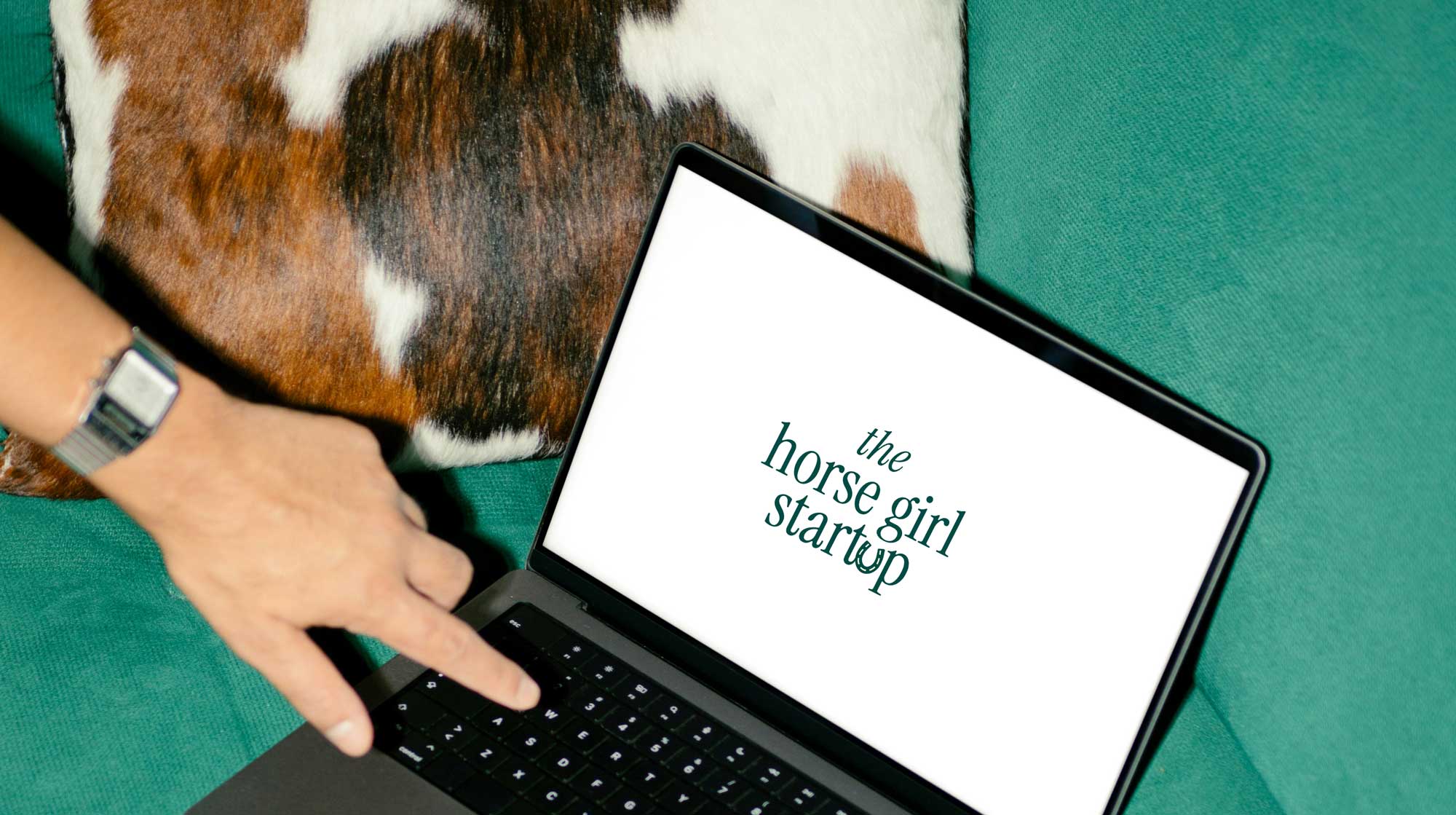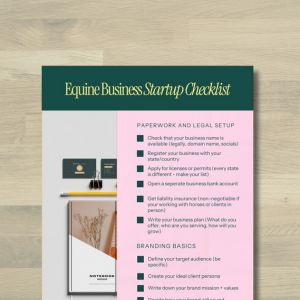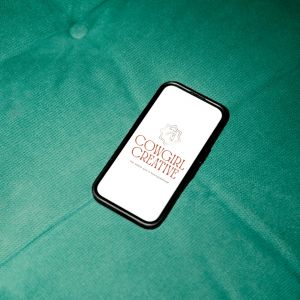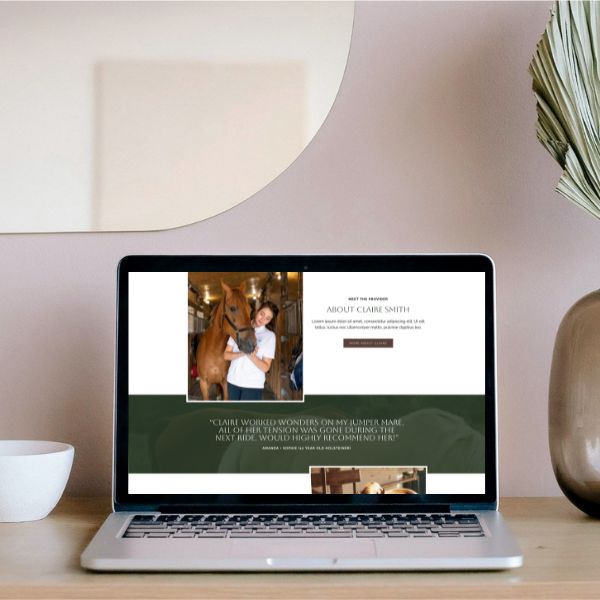Get 10% off Your First HGS order to celebrate our launch with code LAUNCHYAY10

Starting your own equine business is a big deal. It’s exciting, nerve-wracking, and usually full of moments where you have no idea what the f*$# you’re doing.
Take it from somewhere who’s been there – that’s all normal.
But here’s the good news. You don’t actually have to have it all figured out in order to be successful. But it helps to have at least a brief idea of what to do first…
*Insert roadmap to launching your equine business here*
Because I like you (and want to support you), I’ve put together five steps that will get you off the ground and help you figure out how to launch your equine business without so much stress.

I’ll be totally honest with you. This first part sucks. It’s definitely the least glamorous part of starting a horse business – but it’s also the one that’s going to save you the most headaches in the future.
So, where do you start? With the basics.
This can be both fun and wildly frustrating (depending on how much of a perfectionist you are). You want a name that you love that’s also LEGALLY available to use.
Before you pick a name, make sure that it’s not already taken. Check your local area, do a web search, and check social media handles. I’d also suggest checking for trademarks (so you don’t step on anyone’s toes legally).
If you need more help, check out this blog post on how to pick a name for your equine business.
Take a look around at who else is offering similar services in your area. Notice what they’re doing well, but also pay attention to what’s missing.
Maybe no one in your area is offering kids’ riding lessons with a confidence-building focus. Maybe every equine massage therapist is marketing themselves the same way.
Your goal isn’t to copy them; it’s to see how you can do things differently.
I’m going to keep this part short (because I’m not actually a lawyer). Don’t skip the legal stuff. Seriously.
Make sure you figure out what licences, permits, and insurance you need in order to run your business safely and legally.
You should be able to tackle this with some web searching, but it might be good to get in touch with a lawyer who knows their way around the horse world.
Put your ideas into a business plan. Yes, an actual business plan. So many horse businesses collapse not because the people weren’t good with horses, but because they never thought through the numbers or the long-term strategy.
This is where you decide not only what you’ll offer, but who you’re offering it to. “Anyone with a horse” isn’t a target audience.
Decide whether you’re talking to first time horse moms, competitive riders who’ve been at it their whole life, or barn managers who spend more time organizing than riding (or someone in between).
It’ll be so much easier to market your business if you know exactly who you’re marketing to.
Let’s just get one thing straight: your branding isn’t just a pretty logo and colors you like because they match your aesthetic.
It’s about shaping the way your clients experience your business from the start. But before you shape their experience, you need to know who they are.
All good branding starts with sketching out your ideal client.

Think about your ideal client as if you’re sketching a character.
(Creating a fake client can feel a little silly, but it works. And it keeps you from building a brand that only appeals to you and not the people you’re actually trying to reach.)
Once you’ve got that client in mind, nail down your brand strategy.
Your brand strategy is the anchor that keeps all of your visuals and messaging consistent.
Only then do you move into the design side: the logo, the fonts, the color palette.

Your website is your home base. Social media is great, but you don’t own those platforms. Algorithms change, accounts get hacked, and suddenly your only marketing channel is gone. Your website is where you’re in control.
Before you dive into design, do a little groundwork. Look at competitor websites with a critical eye. What feels clear and welcoming? What makes you want to click away? Use that research to figure out how your site can stand out.
Next, write your website copy. Don’t just slap words on a page. Think about what your ideal client needs to know to feel confident hiring you. Your services, your story, and your values should all come through.
(If you need a little help, check out the website copywriting workbook in the shop)
When it comes to design, keep it clean and professional. Use high-quality photos, and choose your own over stock whenever possible. Carry your brand visuals through the site so everything feels cohesive.
Your website doesn’t have to be complicated, but it does need to feel intentional.
Social media can feel like an extra full-time job, but it’s often where your first few clients will discover you. The key is to pick a platform that makes sense for your audience — not just the one everyone else is buzzing about.
For example, if your barn is full of moms signing up their kids for lessons, Facebook is still gold. If you’re an equine photographer selling prints or booking styled shoots, Instagram is probably your best friend. And if you’re building a personal brand or you’re not shy about video, TikTok can be surprisingly powerful for reaching a wider audience fast.
Don’t overwhelm yourself by trying to juggle everything at once. Choose one platform you can commit to consistently. Post like you’re letting people peek into the barn aisle — give them behind-the-scenes moments, quick tips, and stories that show your personality. That connection is what will make people
Once you’ve launched, the next challenge is making sure people actually find you. Clients don’t just materialize because you built a pretty website — you’ve got to lead them there.
This is where your marketing plan comes in. Maybe it’s basic SEO so that when someone searches “hunter jumper trainer near me,” your site pops up. Maybe it’s building an email list so you can nurture relationships and stay top-of-mind. Or maybe it’s collaborating with another local business — the saddle fitter, the tack shop — to share referrals.
The point is, marketing isn’t a one-time box to check. It’s the steady, ongoing effort that keeps your business in motion long after the initial excitement of launch has worn off.
Launching an equine business isn’t something you knock out in a weekend. It takes thought, planning, and patience — but if you tackle it step by step, it suddenly feels doable. Start with the paperwork, build your brand, create a website you’re proud of, choose your social platform, and map out a plan to market yourself.
These are the building blocks that separate businesses that last from those that quietly disappear after a few months.
And the best part? You don’t have to figure it out on your own. That’s why I built The Horse Girl Startup — to give you templates, workbooks, and resources that make the process a whole lot easier.